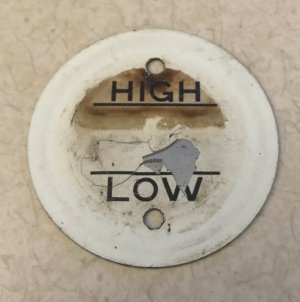- Joined
- Jan 4, 2021
- Messages
- 912
I will be going through a lot of trouble cleaning up and getting my K&T looking as good as it runs, I was thinking of how I can "fix" the oil sight gauges.
I already have replacement acrylic discs, but now I'd like to do something with this. Any ideas? I thought about painting it and then using dry transfer letters, but not sure where to go to get the letters (or whole words) that are the right size, etc. Not to mention, how they would hold up to sitting in oil.
Would be interested in hearing options/feedback.

I already have replacement acrylic discs, but now I'd like to do something with this. Any ideas? I thought about painting it and then using dry transfer letters, but not sure where to go to get the letters (or whole words) that are the right size, etc. Not to mention, how they would hold up to sitting in oil.
Would be interested in hearing options/feedback.


